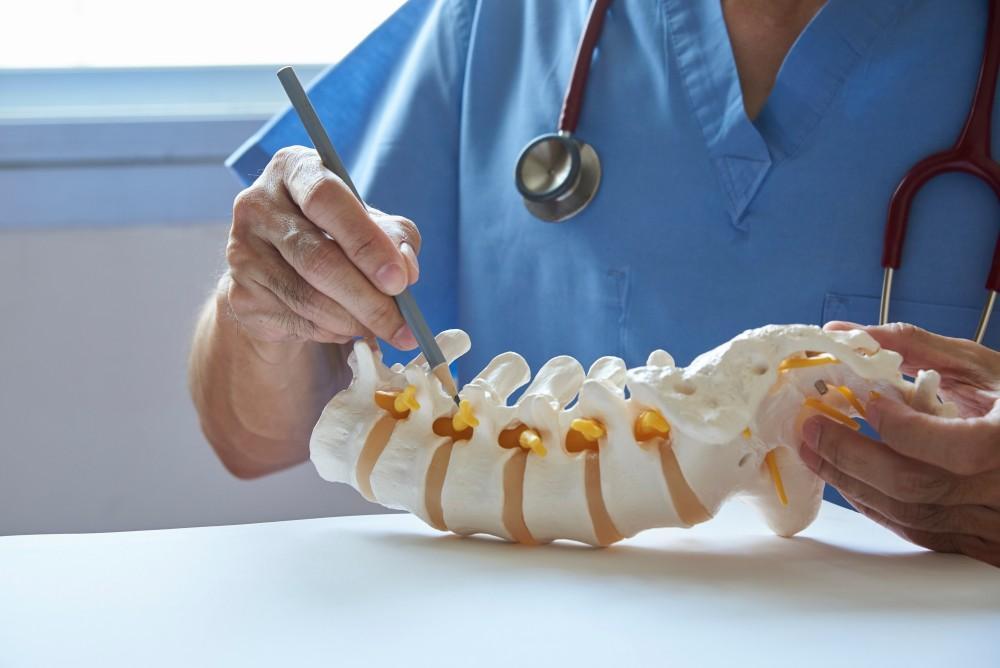
How Physical Therapy Can Treat Your Sciatica

The sciatic nerve is the longest nerve in the body. It starts in the lumbar (lower back) spine, and splits off into two branches, each of which travels through your buttocks and to the outside of the legs and feet. If the nerve root at L4-L5 and/or L5-S1 should become compressed or irritated for any reason, you can experience pain, numbness, and a tingling sensation anywhere along the nerve’s length, with the pain ranging from mild and intermittent to cripping and constant. The collection of symptoms is referred to as sciatica.
At Vertrae®, board-certified neurosurgeon Dr. Kamal R. Woods and his team know how painful and bothersome sciatica can be, which is why they offer the latest diagnostic and treatment technologies to give their patients in the Dayton and Springfield, Ohio, areas relief. Here’s what they want you to know about sciatica and how physical therapy can be an effective treatment.
Factors that could be contributing to your sciatica
Sciatica is a common condition that makes up about 10% of lower back pain complaints. While all causes lead to a compressed nerve root, those causes are varied and include:
Getting older
Your entire body deteriorates as you age, including your spine. Two of the most common causes of sciatica increase in frequency as you get older: herniated discs, where the cushions between the vertebrae lose moisture and break, spilling out the inner gel that then impinges upon the nerve; and bone spurs, bony growths on the vertebrae that can also impinge on the sciatic nerve.
Being overweight or obese
Excess weight puts a strain on your entire body, including your spine. A 2014 study found an association between being overweight or obese and developing sciatica for both men and women. A healthy diet and regular exercise can help you lose weight and reduce your pain, while improving your cardiovascular and overall health at the same time.
Occupational hazards
If you sit for long periods of time, say, at an office job, you run a greater chance of developing sciatica than people who remain active. And that’s especially true if your setup isn’t ergonomically designed and you therefore don’t maintain good posture while sitting.
In addition, if you have to routinely bend and twist, or your work requires you to lift heavy objects, you run a greater risk for developing sciatica, as you’re putting an extra load on your spine. Make sure you always lift from the knees, not the back.
How physical therapy can treat your sciatica
Physical therapy helps strengthen tissues in the lower back, pelvis, abdomen, buttocks, and thighs, and helps them move more appropriately.
The goals of physical therapy in treating sciatica are to:
- Restore pain-free functional movement
- Relieve pain along length of nerve
- Reduce muscle spasms
- Restore function of the lumbar spine and the sacroiliac (tailbone) joint
- Improve mobility of the lower body
- Create a better healing environment in the lower back
- Reduce the perception of pain through neurological adaptation
- Prevent future pain flare-ups
Physical therapy may or may not be combined with other pain-relieving treatments, such as a microdiscectomy to repair a herniated disc, OTC or prescription medications, and/or epidural steroid injections. It’s important that you commit to the process and that you practice the stretches and exercises you’re given; the more you do, the better you’ll feel.
Some specific exercises you may encounter (by no means an exhaustive list) include:
- Extension and flexion back exercises: relieve pain by promoting spinal movement; include backward (extension) and forward (flexion) bending
- Strengthening exercises: bodyweight and resistance exercises to strengthen the muscles of the abdomen, low back, hips, and legs
- Muscle energy technique: a form of manual therapy; the patient performs gentle muscle contractions while the therapist moves the painful joints through a specific range of motion
- Myofascial release and soft tissue mobilization: therapist uses their hands to mobilize the tissues in the lower back, hips, or legs, releasing soft tissues and muscle tension and spasms
If you’ve got sciatica and aren’t finding the relief you need, Vertrae is the place you need to be. Call our office at either location to set up a consultation with Dr. Woods, or book online with us today. We can help.
You Might Also Enjoy...


4 Benefits of Outpatient Spine Surgery

Am I a Candidate for Kyphoplasty?

Pulled Muscle vs. Pinched Nerve: What's the Difference?

4 Subtle Signs of Sciatica

